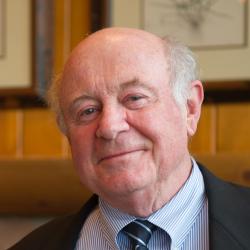In politics, there is nothing like a hard knock to focus the mind. Chicago Mayor Rahm Emanuel tells how this happened for him. In The Atlantic, Emanuel describes himself as once a believer in teacher-focused reforms, particularly test-based accountability. But in the middle of a bruising teacher strike, he had a moment of clarity.
“The autonomy of principals. … The question was whether individual principals would have the ability to hire faculty of their own choosing, or whether, as [Union head] Lewis preferred, principals would have to select from a limited pool maintained downtown with the union’s strong input. … I was tempted to fold. … Mahalia Ann Hines, a former school principal … pulled me aside. … If we were going to make lasting improvements to Chicago’s schools, she argued, principals needed that flexibility. Without it, they would not be able to establish the right culture or create a team atmosphere. And, at least as important, principals would not have the leverage to coach teachers struggling to help their pupils succeed.”
Emanuel then adds:
“I then decided to go all in on principal-centered reform. We raised principals’ salaries, particularly for those working in hard-to-staff schools. Chicago established a new program explicitly designed to recruit and train new school leaders. We collaborated with Northwestern University to improve professional development for principals. And we gave the best-performing principals additional autonomy by establishing a system of independent schools, subject to less oversight from the central office.”
Two decades ago, I, along with colleagues at the Center on Reinventing Public Education (CRPE), coined a term for what Emanuel calls principal-centric reform: “the portfolio strategy.” The strategy holds that schools work when the professionals in them know their students, build on student strengths and address needs, adapt learning opportunities in light of evidence, and make sure student experiences add up from one classroom to over time. Schools can’t be like that if teachers are controlled by rulebooks or strict job descriptions, or if principals must accept teachers who can’t or won’t contribute. At the same time, it holds that lower-performing schools must be replaced with higher-performing ones (as Emanuel argues elsewhere in his article) to ensure the system of schools improves continuously over time.
Emanuel claims school autonomy is the root cause of Chicago schools’ recently dramatic improvements, which have been documented by Stanford and the Chicago Consortium on Schools Research. Though they tell a more complex story, the Chicago Consortium’s studies confirm that the city’s dramatic gains in student learning stem from school-level coherency, staff sharing responsibility for students, thoughtful use of student data, and quick response to issues that arise in individual students’ learning.
Sometimes it takes an outsider like Emanuel to see so clearly. In a city as diverse as Chicago, no two schools face exactly the same challenges. Mandates on instructional method, use of time, student grouping or teacher assignment encourage uniformity in situations requiring innovation, problem solving, and initiative. When Emanuel saw this, he was able to pull back from a struggle over who would control the schools.
The mayor sees what researchers have been telling us for a long time: School autonomy matters. It’s what distinguishes high-performing district schools from the run of the mill. Even among charter schools, the highest-performing ones have freedom to select teachers, adjust teacher and student assignments, and invest in teacher training. As CRPE’s and RAND Corporation’s recent studies of personalization show, heavily regulated schools can’t personalize instruction and let students develop special talents. The World Bank has found school autonomy to be the key to performance, all over the world, both in rich countries and poor.
In America, this message is slow to sink in. Like Emanuel before his eureka moment, school board and union leaders think it is their job to say what schools will do, who will work in them, and what every student should experience. These entities are acting in their own self-interest, as unions’ power depends on their ability to wrest control away from school leaders, and school board members often measure their influence in terms of policies adopted and school decisions reversed.
Autonomy is where the interests of teachers unions diverge from those of individual teachers. While unions benefit by controlling decisions via the collective bargaining agreement, teachers benefit from having influence over selection of their co-workers and school priority setting. Teachers with good ideas get a much better hearing from their immediate colleagues than from distant union leadership or central office bureaucrats.
Autonomy must be defined in terms both of what schools can do and in what the district and union can’t undo. However, autonomy can’t be absolute. Schools that squander students’ time and public funds must pay the price, in staff and leadership changes. When teachers and principals can’t work together effectively, school boards and superintendents must find alternatives for children. But they must seek to put schools on their feet, not to make them dependent. For autonomy to be real, unions can still negotiate over salaries and benefits, but school staffing and priority setting, the sticking points in recent Chicago and Los Angeles strikes, should be left to schools.
Some justify controlling schools from the outside by saying that school leaders will make a mess of things, or really don’t want to make consequential decisions. But that’s a self-fulfilling prophecy: when everything is prescribed, people who would prefer not to solve problems and take responsibility are willing to be principals and initiative-takers stay away. But there is no shortage of smart, ambitious teachers who would take the job if it were not a dead end. When—as in Chicago, New York City, New Orleans, and Denver—principals are leaders, not rule followers, new leaders emerge and some incumbents rise to the occasion.
School district centralization is deeply entrenched, so that half-hearted efforts to increase autonomy are not enough. It doesn’t work to tell school leaders they can choose staff and then tack on a union veto. Or to transfer money from other schools to pay the salary costs of a school with all senior teachers. Or to maintain strict rules about maximum class sizes and teacher work assignments. Or to force a child to attend a particular school when another school is a better fit. Creating supportive conditions for high-performing schools is what the portfolio strategy is all about. It’s also why charter schools, relieved of district oversight, have a built-in advantage.
As Emanuel argues:
“Principals, not just teachers, drive educational gains. The brain-dead debate between charter and neighborhood schools should be replaced with a focus on quality over mediocrity. To get kids to finish high school, the student experience should center on preparing them for what’s next in life. Finally, classroom success hinges on the support that students get outside school.
Parents are rarely surprised when I note that even the best teachers can be rendered ineffective in a dysfunctional school, or that a great principal can turn a good teacher into an extraordinary educator.”
A city committed to autonomous schools will benefit now and in the future. As automation and economic change transforms work, schools will need to change their curricula, provide much better information about the demand for skills, and link students to promising career pathways. These events, and constantly growing opportunities to personalize and nurture talent, will transform schools—if schools have the freedom to change.






Commentary
Chicago’s mayor sees through the fog on school autonomy
February 15, 2019